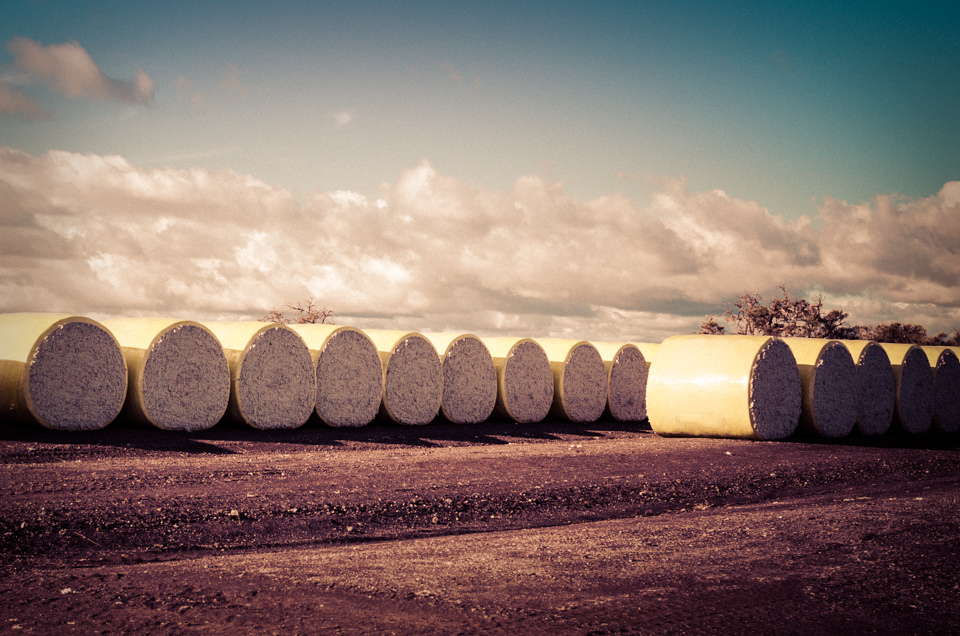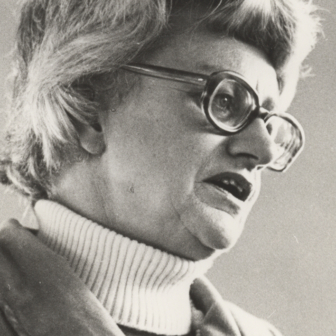Early in October 1991 graziers Malcolm and Alister Fraser were going about their usual station work when they discovered dead cows and calves in a paddock beside the Darling River. There were no signs of injury or any other clues as to what had killed them. Not far away they saw several of their merino rams lying dead in the yellowing grass.
Something strange was happening on their river block. There had been hardly any rain for the past nine months, and everyone knew drought was setting in, but conditions were hardly dire. The previous year the region had seen its largest floods in nearly twenty years. In all, the Frasers counted thirty dead Brahman cows along with their calves, and about 140 merinos. The surviving cows were so weak that many had to be helped to their feet. A week ago the animals had been fine, and now they were dead or distressed. What was killing them? Why had they died so suddenly?
Malcolm was well into his eighties. He’d seen plenty of droughts and there wasn’t anything remarkable about this one. He knew sheep survived a long time into the dry, picking at every last remnant of vegetation. They didn’t just drop dead. Something wasn’t right. Then the Frasers noticed a stench coming from the river and saw a thin green film had begun to form over its surface. Eventually it spread over the length of the Darling running past their three properties between Bourke and Louth.
It unsettled the Frasers. Their family came to the Darling in 1857 and none of them had witnessed or heard stories about anything like what was happening to the river. Big clumps of slime half the size of an esky began floating past their fifty thousand hectares. A few weeks later Malcolm told the Sydney Morning Herald’s Peter Bowers that he had turned one of the clumps over and it stank “like a calf with the scours.” On some days the smell was nauseating.
The Frasers began to suspect the river itself was the cause of the deaths. They took their stock back into the red soil country and cut mulga scrub for feed. The only thing different about this drought, in Malcolm Fraser’s view, was cotton. There was no green slime before the irrigators came.
Cotton arrived in Australia on 18 January 1788 aboard Captain Arthur Phillip’s First Fleet, which had collected seeds in Rio de Janeiro along the way. “What Britain really wanted from its Australian colonies was a cheap and reliable supply of raw cotton,” writes Ted Henzel in his history of Australian agriculture. “What it got instead was wool.”
Australian growers had difficulty attracting capital for cotton farming because investors believed the labour costs would be too high: everywhere else in the world cotton was grown with the cheap labour of slaves and colonial plantation workers. Queensland managed to develop a cotton industry during the American civil war, after the Union blocked the Confederates’ ports, but it collapsed soon after. In the 1920s Australia abandoned efforts to grow cotton for Britain and attempted to supply the domestic market. But wasn’t until the 1960s, after large dams were completed on the NSW western plains rivers, that cotton became established in Australia.
Cotton reached Bourke, courtesy of the Boon and Buster families, in the late 1960s. They established a Christian commune at Pera Bore, right on the spot where the NSW Department of Agriculture had tried growing cotton at the start of the twentieth century. There are no suitable places for a dam on the Darling, but Jack Buster was attracted to the plains because “there were no trees, lots of land, a big river, it didn’t rain so much.” He “fell in love” with Bourke when he saw the plains for the first time during the drought of 1965: “there was nothing there, it was shocking conditions, horrible – but it still looked like paradise for farming,” he told historian Siobhan McHugh.
Because cotton evolved in tropical and sub-tropical environments, it favours high temperatures and heavy soils. The western plains could provide black clay soils along the river and hot summers – they just didn’t have the rain. But irrigation was a suitable substitute. In fact, it was better: rain just got in the way. If the rain fell elsewhere and came down the river then irrigators could precisely control the application of water. American-style cotton growing appeared to be the perfect model to suit the management philosophy of “command and control.” Variables would be excluded, yields optimised, efficiency achieved and production maximised.
In November 1991, three weeks after the deaths on the Frasers’ property, the Dubbo office of the NSW Department of Water Resources issued its first official warnings. The office had received reports of large quantities of blue-green algae on the Darling below Bourke. It advised landholders not to drink the water and avoid contact with it, and to keep stock clear of the river. Local officials at Bourke wanted to know exactly what they were dealing with and what they needed to do to ensure people and stock were safe.
Locals took water samples from the Darling and sent them to the Department of Health labs in Sydney for analysis. While waiting for the results, Bourke shire’s health officer, Terry Pearce, made “increasingly frantic” calls to government departments in Sydney for advice on how to handle the looming health crisis. He couldn’t get any clear answers.
On 5 November Bourke shire president Wally Mitchell and health officer Terry Pearce received the results of the tests. Immediately Mitchell broadcast an emergency message on Bourke’s local radio station warning of the “extreme danger” to humans and stock: “we don’t want to alarm people... [but] the toxin from blue-green algae is, in fact, in pure form more dangerous than cyanide.” Mitchell then hatched a plan to spray vast tracts of the Darling with an agricultural algaecide. When the NSW Pollution Control Commission refused to grant permission for the aerial spraying, Mitchell said he would go ahead anyway, and the Commission warned they would sue him personally if he did. That wasn’t going to stop “the Mouth from Louth.”
Mitchell procured 600 litres of a copper-based algaecide. A large cotton irrigation firm offered to donate the use of one of their crop dusters and a pilot. When residents in Bourke heard of the shire’s plans for aerial spraying of the chemical over their water supply a group formed to try to halt the action. The chemical had never been used for this purpose and wasn’t approved for use on open water. Concerned residents called the Pollution Control Commission, which assured them the spraying would not go ahead. On 9 November Mitchell had the crop duster pilot track the ailing Darling over forty kilometres, releasing the deep blue liquid algaecide onto the water and black soil plains below. The pilot commented that “zigzagging along the ever-twisting Darling was an interesting change after the repetitious runs spraying cotton.”
The National Parks and Wildlife Service opposed the use of the chemical. Ian Smalls, the principal scientist of the Department of Water Resources, said if he’d known he would have strongly advised against its use. Copper-based algaecides work by attracting algae with its nutrient content. The algae absorb it through their cell wall and a digestive enzyme breaks down the algaecide and releases copper into the cell, killing the algae.
 Thirsty weather: drought-stricken western New South Wales in 2007. Mark Merton
Thirsty weather: drought-stricken western New South Wales in 2007. Mark Merton
When used as directed, the algaecide is not toxic to humans. The reason so many authorities objected to its use – apart from its being untested in such circumstances – was that the algaecide causes the dead algae to release their neurotoxins into the water immediately. Smalls said the effect was “like putting pins in a balloon, releasing other materials.” According to the manufacturer’s website these toxins could persist for twenty-eight days. Authorities feared mass fish kills could result, as well as the potential for poisoning of stock and humans.
One Bourke resident wrote a letter to the Sydney Morning Herald asking if the Darling River was being “used as a guinea pig for experimenting with chemicals” and accusing Mitchell of using ten times the recommended concentration. Mitchell didn’t see his actions as a massive gamble. He claimed he had verbal permission from the Department of Agriculture in Orange and that the spraying had been a success. The department refuted this, telling the Herald, “We were waiting for Wally to get back to us to obtain official permission. He never did.”
For Wally Mitchell, a grazier himself, responsible for the safety of the shire’s people and its economically valuable stock, and getting nowhere with urban authorities, the dangers posed by a rapidly growing toxic algal bloom must have outweighed the risks of using the relatively benign algaecide. To some of the residents, however, it seemed as if some of the primary producers of the region had taken on the cavalier and reckless culture that they said the foreign-owned cotton firms had introduced.
It wasn’t until the 1980s that the Bourke irrigators really became established and started expanding their operations. They were soon eclipsed by Clyde Agriculture, a subsidiary of the British conglomerate Swire Group, which started buying thousands of hectares and building enormous off-river storage cells. The cotton irrigators established a “new order” in a region in which pastoralism had dominated for the past one hundred years.
Historian Heather Goodall observed the social and environmental upheaval going on in the course of her long-term work with Aboriginal people of the upper Darling. She wrote eloquently about the oral testimony of townsfolk and graziers who were worried about the new agricultural developments. Residents had begun to tell a story about how “the river runs backwards” whenever the irrigators turned their pumps on. Whether it was true or not, the phrase expressed their anxieties about the power of the irrigators’ machinery to interfere with the plains environment as they had come to know it. Whenever the story was told it always sounded the same, Goodall reported, “spoken in a worried, uneasy tone, or with a disgusted shrug.” It was “no admiring boast of the power of modern technology.”
By the late 1980s pastoralists were no longer “kings in grass castles” in areas where irrigation was possible. Although they had benefited from improved pastures and reasonable demand through the 1970s and 80s, they were still carrying out low-capital operations. Goodall noted that the economic shift reflected shifts in political power. In cotton towns like Bourke, members of the cotton families began to be represented in “significant numbers in local government.” That the irrigators displaced the grazing families only explains part of what Goodall calls the “open tension” between them. A far greater cause of hostilities has been a battle over how they have seen each other’s attitudes and production activities in relation to the degradation of the plains and its rivers.
After the Darling River turned green in 1991, many people – from local residents and pastoralists, to observers in the cities – started to blame cotton for the unprecedented algal bloom. The river had been low and slow before, and temperatures were always hot out on the semi-arid plains, but there had never been an explosion of algae like this one.
Communities downstream from the big cotton developments felt desperate and neglected. The Wilcannia branch of the National Party sent a letter to its political enemy, the Labor Party, then in opposition, pleading for reform that would make water management more socially equitable and prevent degradation of the environment. It read:
Our river is a mess. Over recent years the deterioration of the quality and quantity along the unregulated section of the Darling River has increased significantly... We believe the philosophy that the stored water in the dams at the headwaters of the Darling–Barwon system belongs totally to the irrigation valleys around these dams is so wrong as to border on [a] severe breach of human rights.
People living downstream from irrigation correlated deterioration in river health and flows with the increase in extractions from the river. It seemed the water authorities had handed the river to the irrigators and there was no compensation for everyone else who depended on water.
This problem of “clientism” persisted in the Department of Water Resources, the successor of the Water Conservation and Irrigation Commission, which had been established in 1916 to develop new irrigation projects. In the 1980s the department basically functioned as a rural supply authority. Some claimed that active collusion between the public servants and irrigators was still part of the culture in the 1990s.
After the algal bloom hit the headlines a former owner of small cotton properties in western New South Wales wrote a letter to the editor of the Sydney Morning Herald suggesting that there had been “some very close liaisons between some Water Resources officials and large irrigators.” He said the Darling was a “national disgrace” and that the brazen and domineering culture of cotton meant that although “many people in Darling River towns had been aware of the problem for years” they had been “intimidated into silence.” Even Department of Water Resources staff who were outsiders to the local cotton culture felt intimidated. When staff member Allan Amos moved from Newcastle to Bourke in the mid 1970s, his wife began to fear for his safety when he started trying to enforce water laws. The local police wouldn’t offer protection, telling him until someone had “taken a shot at [him] with a rifle, they were not going to get involved.”

Cotton bales at Bourke, New South Wales. Mathew Packer
By the start of December 1991 the toxic algal bloom had grown to cover an astonishing 1200 kilometres of the Darling River. It forced the NSW government to declare a state of emergency, and the federal government rushed to mobilise the army. Rural communities and landholders living along the river were warned not to touch or drink the water for fear of severe eye and skin irritations and “horrendous internal injuries.” Stories circulated of people going to extraordinary lengths to obtain clean water. The owner of a pub in Wilcannia didn’t have any tank water left so he had to borrow twenty litres from the local church. One family who lived on a property near Louth drove one hundred kilometres each day for their evening shower and to wash their one-year-old’s nappies. Another family was reported to have packed up and moved to Dubbo on the Macquarie River after their baby broke out in a skin rash.
The state government established an emergency taskforce comprised of ten senior scientists to investigate what caused the bloom, how to manage it, and how to prevent it from happening again. Its exact cause is still unknown, but the scientists on the panel and most investigators afterwards agreed it was a combination of excess nutrients and climatic circumstances.
Phosphates built up in paddocks and on the banks as a result of run-off from pastoral and agricultural fertilisers, and from town sewage releases into the river. Overstocking and ploughing destabilised the soil, and when the largest floods in almost twenty years came through in 1990 all those phosphates were washed into and suspended in the water. (The problem of bank erosion might have been exacerbated by a decision taken by the Greiner government in 1988 to allow landholders easier access to riparian zones.) The blue-green algae, which are not technically algae but belong to a genus of cyanobacteria called Anabaena, are endemic to the river and hatch from cysts in the mud in summer. After the floods came a series of dry months, and the next summer the river flow was low and slow, making perfect conditions for the algae.
The entire management of the inland rivers and their catchments became the subject of intense scrutiny and public debate. The algal bloom had occurred ten years after the Murray stopped flowing to the sea for the first time since anyone could remember. These events showed the power of the Australian environment to surprise and perplex a society still trying to adapt to its unique characteristics.
Health metaphors to describe the condition of riverine ecologies, and the idea of dying rivers, entered the national consciousness. One scientist at an algae crisis taskforce meeting said the Darling had suffered what amounted to “a massive heart attack.” Addressing the immediate crisis meant admitting the long-term failure of river and land management. The NSW natural resources minister acknowledged it had “taken decades to get to this stage, and it may possibly take decades to overcome it.” The head of the taskforce advised that “there’s no triple bypass, no miracle cure, just a long haul back.” A year after the bloom, prime minister Paul Keating gave a speech in which he promised to restore the health of the Murray-Darling, replacing “a matter of national shame with a cause for hope and pride.”
Whatever your politics, whatever your values towards the living world, whether you were an environmentalist or not, it seemed everyone believed something had gone appallingly wrong in the way Australians were managing their role in the environment.
Seven years after the bloom, in 1995, a consortium of cotton growers from Warren and Nevertire, on the Macquarie River, purchased a property called Currareva, on Coopers Creek in the Channel Country of western Queensland, with plans to develop it for irrigation. Environmentalists, scientists and graziers were outraged that one of “the world’s last great unregulated river systems,” as a Sydney Morning Herald report described it, was going to have 40,000 megalitres of water diverted to grow cotton. They formed an unlikely alliance. No one wanted to see what was happening to the Macquarie Marshes occur in the Channel Country.
The Currareva dispute became one of the biggest conservation battles of the 1990s. In 1998, a new government took power in Queensland, and in response to the campaign, rejected the development application. Strong social partnerships stopped agriculture being carried out in a way that was unacceptable to the local community, and prevented the potential degradation of a wild river.
The years since the outbreak have seen a constant churning of amendments, new legislation and organisational restructures. The most recent – the Murray–Darling Basin Plan – the centrepiece of a ten-billion-dollar river regeneration strategy, suggested government water authorities would need to make significant reductions to irrigation water allocations to improve the health of the rivers. But the consensus on the need to reduce diversions soon fell apart. On 13 October 2010 irrigators from the town of Griffith burned copies of a report known as the Guide to the Plan and shouted abuse at public servants who had met for a town hall meeting. It made national television news headlines.
The irrigators’ aggressive response to the proposed plan rattled the federal government, which distanced itself from the Murray–Darling Basin Authority whose advice it had commissioned. The head of the authority resigned and the government appointed a former politician in his place. State governments, in a combination of political and budgetary opportunism, withdrew funding necessary for implementing the plan. The science suggested that the least risky option for ensuring river health was to reduce overall entitlements by 7600 gigalitres, and that the riskiest option was a 3000-gigalitre reduction. The federal government passed legislation in 2012 with the aim of reducing water entitlements by just 2750 gigalitres.
The Wentworth Group, an independent group of scientists whose members have included Tim Flannery and the late Peter Cullen, accused the federal government of caving in to “extremists who are hell bent on destroying water reform for political reasons.” More money was budgeted for subsidising the irrigation industry’s infrastructure than for water buybacks. The Wentworth Group feared the large transfer of wealth from taxpayers to industry in the form of property rights and subsidies had the potential to become “a scandal of generational proportions.” The new head of the Murray–Darling Basin Authority, Craig Knowles, used the language of “resilience theory” and “adaptive management” to propose the possibility of “adapting” the plan in the future to reduce the already inadequate 2750-gigalitre figure. This is the “slow violence” of “natural resource management.”
Largely missing from the debate had been the voices of Indigenous Australians. In April 2010, Aboriginal people of the northwest rivers region, including the Darling, Macquarie and Bogan catchments, formed an alliance in an attempt to have their views on river management heard. The new group, Northern Basin Aboriginal Nations, represents twenty-two Aboriginal nations. According to Phil Sullivan, a Ngemba traditional owner who has worked in co-managed national parks and consulted on cultural heritage and river system health, Aboriginal people see water and its ecology as a gift. As he explains:
Water to me is the essence of life. And I’ve got to respect life, and I’ve got to honour life. If I don’t honour it and look after it, then it’s going to take my life away from me. It’s going to take the very essence of who I am away from me. So that’s why I honour the river, the water, and give respect to it. Because in the end if I don’t look after that... then me and my family and my tribe and the gift that’s been given to us is going to be whittled away. I got to give honour and I got to give respect to that, first and foremost. And then everything else will fall into place. It’s like a bit of a foundation.
As a member of Northern Basin Aboriginal Nations, Phil has worked on a research project to collect and publicise Aboriginal values for water. For too long, he says, non-Indigenous culture has separated the human world from nature. He is working to restore relationships of care and mutual benefit. Even though the Darling River is in “poor health,” even though local Aboriginal and non-Indigenous people observe ecological degradation, there is still the potential for renewal. According to Phil:
In a traditional setting, if there was nothing there, there’s still something there... Yes, it still flows. That place I’m talking about. The spiritual place. It’s always there. There’s a story that the river will always flow, it never stops. In spirit it flows.
Similarly, Jessica Weir has documented how the Yorta Yorta equated the death of the river with the death of a people. For many Indigenous people, the health of country is “inextricably linked with human health.” This is markedly different from Western knowledge and practices, which have predominantly kept research and policy for the environment separate from human health. If Indigenous people are unable to fulfil their obligations to look after country then people and environment become sick. The Murray–Darling Basin Authority has consulted with Northern Basin Aboriginal Nations, but according to Phil many Aboriginal people still feel they haven’t been heard. Very few of them hold water entitlements.
In Slow Violence and the Environmentalism of the Poor, Rob Nixon challenged the lack of environmental justice for the world’s poorest and most vulnerable. Slow violence is a powerful metaphor for describing Aboriginal people’s gradual loss of their land and water, and the way they are structurally locked out of management decisions that affect their country, their health and their lives.
Slow violence is also useful for interpreting our lack of attention to the drawn-out decline of the plains rivers, an environmental catastrophe that occurs incrementally and without ongoing public interest. It is an effective way of understanding the stories of those who seek to make a living in the wake of the broken promises of agricultural “progress.” The slow violence of the western plains is present in the lives of almost all who seek to grow food and fibre in this landscape. It is ingrained in the social structures of these rural communities. •




